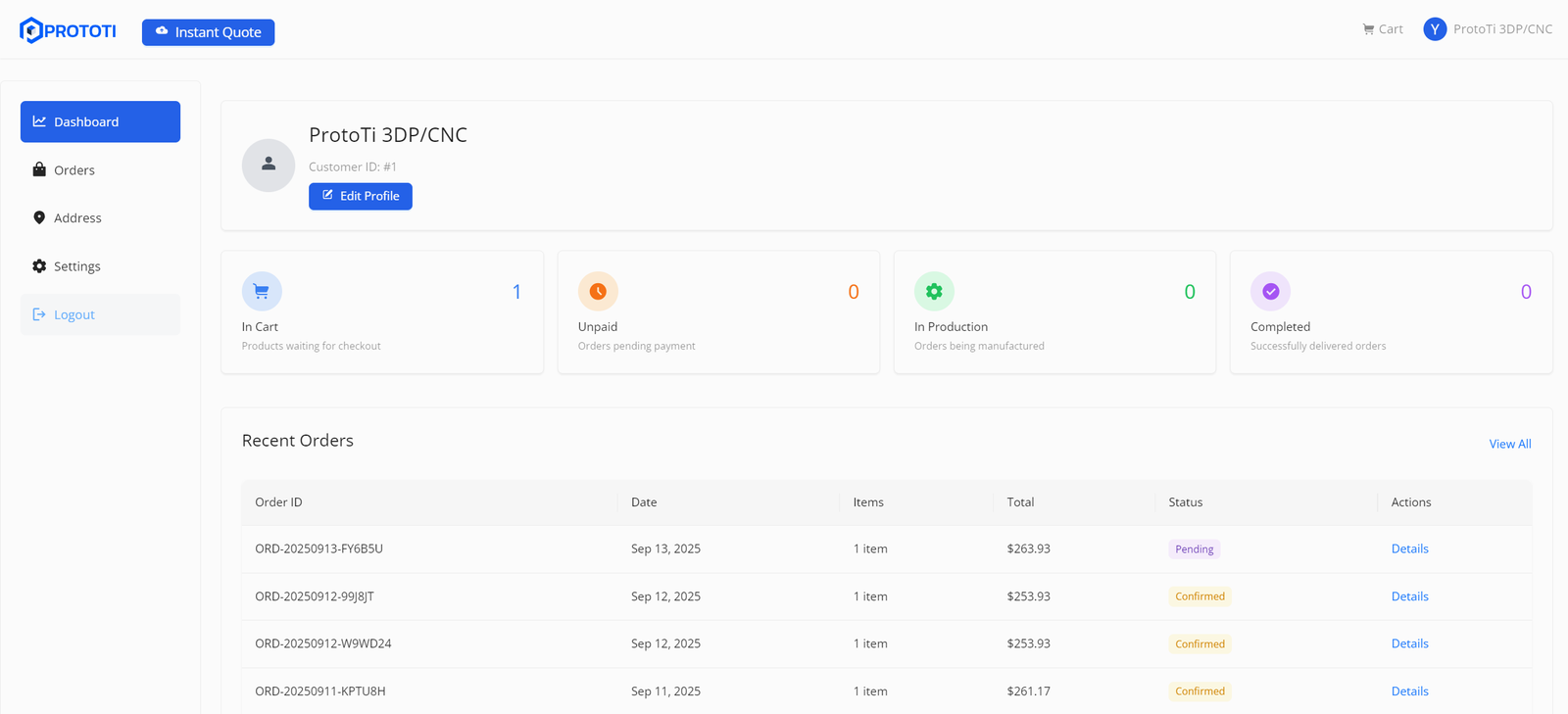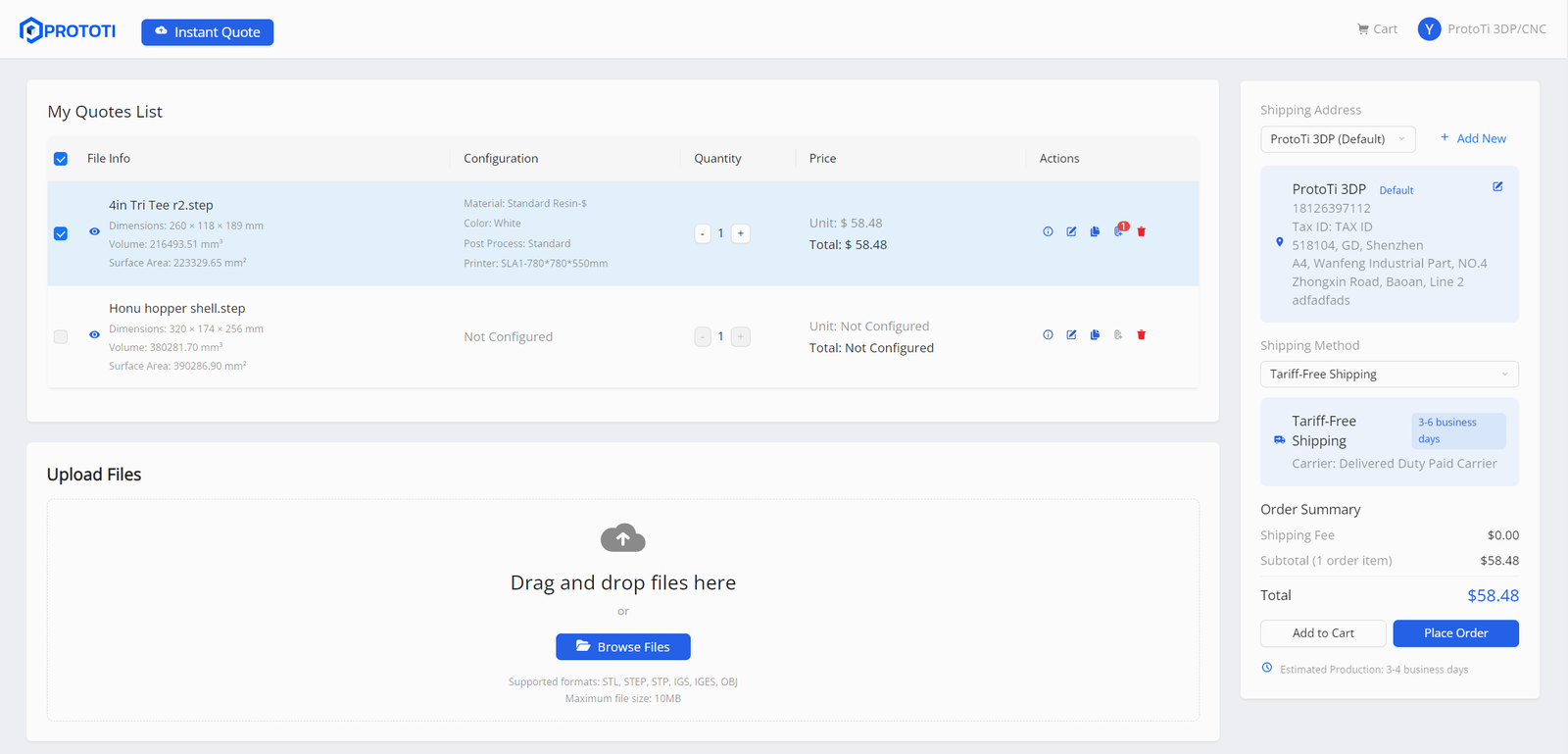MJF 3D Printing Service
Fast and efficient, MJF 3D printing delivers precise part manufacturing. With uniform mechanical properties, sharp details, and smooth surfaces, it minimizes post-processing. High material recyclability reduces waste and cuts costs. Supports complex geometries without the need for supports, ideal for functional testing and small batch production. Choose MJF to accelerate your innovation and bring your designs to life quickly!
- High-speed and efficient, ideal for small to medium batch production.
- Consistent mechanical properties and high-precision detail quality.
- Supports complex geometries without the need for support structures, offering greater design freedom.
What is MJF 3D Printing?
MJF (Multi Jet Fusion) is an industrial-grade powder bed fusion 3D printing technology developed by HP (Hewlett-Packard). It is widely used for the rapid production of functional components. The process works by jetting fusing agents onto layers of nylon powder, followed by the application of heat to precisely fuse the material, resulting in parts with high strength and excellent dimensional accuracy.
Key Features:
✅ Excellent detail resolution and surface quality
✅ High strength, suitable for functional end-use parts
✅ Supports complex geometries and small to medium batch production
✅ Commonly used materials include PA12, PA11, and TPU
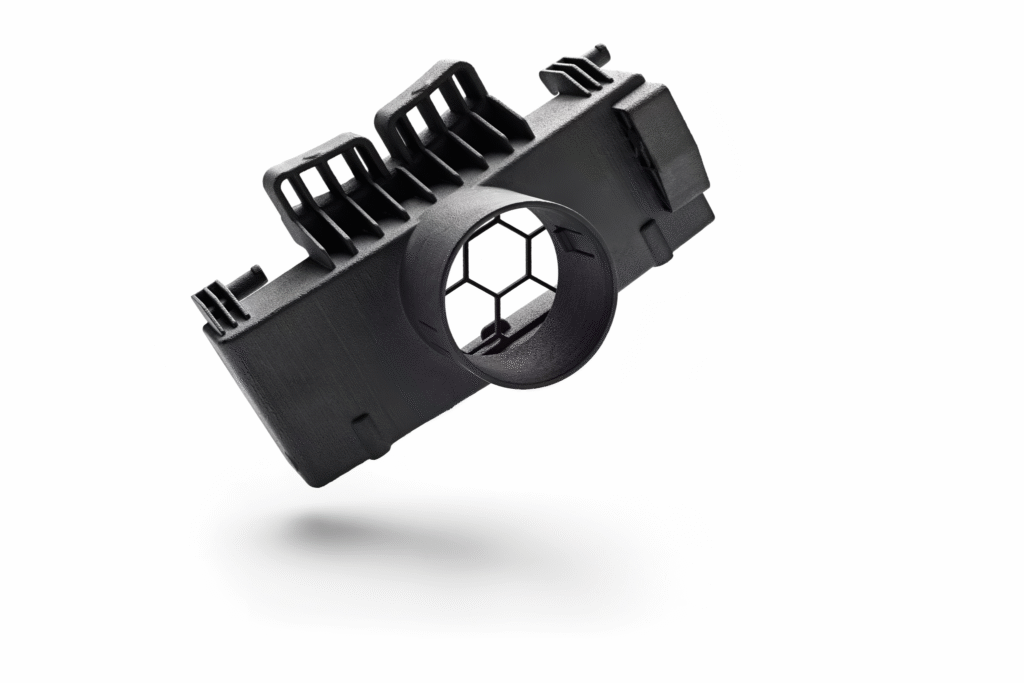
ProtoTi MJF 3D Printing Capabilities
Name
Min. Wall Thickness
Max. Build Size
Tolerance
Support Structures
Lead time
Industrial MJF
0.8 mm
380 x 280 x 380 mm
±0.3 mm
No
from 3 business days
MJF 3D Printing Parts Using Various Materials
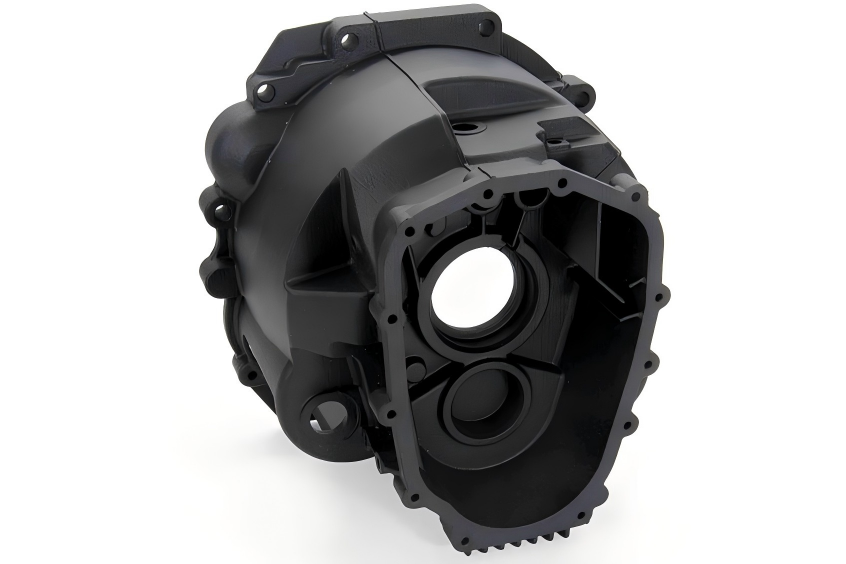
HP PA12
HP PA12 is the most commonly used engineering-grade nylon material in HP’s MJF technology. It offers excellent mechanical properties, dimensional stability, and good chemical resistance, making it ideal for producing functional prototypes and end-use parts.
Key Features:
✅ High strength and toughness, suitable for load-bearing structural components
✅ Excellent dimensional accuracy and repeatability
✅ Resistant to wear, oil, and various chemicals
✅ Smooth surface finish, ideal for detailed post-processing (such as dyeing and painting)
✅ Cost-effective for small to medium batch production
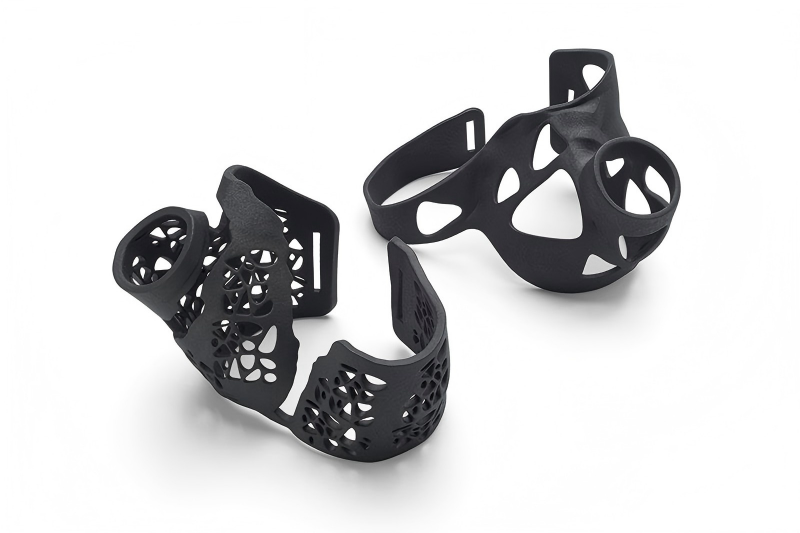
HP PA11
HP PA11 is a high-performance nylon material made from renewable, plant-based sources (castor oil). It offers a combination of environmental sustainability, flexibility, and excellent impact resistance, making it ideal for functional parts that require durability and the ability to deform under stress.
Key Features:
✅ High toughness and excellent impact resistance
✅ Good elongation, suitable for snap-fits and flexible connectors
✅ Bio-based material, environmentally friendly and sustainable
✅ Strong chemical resistance, suitable for demanding environments
✅ Well-suited for applications in medical, sports, automotive, and industrial fields
MJF 3D Printing Material Specifications
Material Name
Description
Max. Build Size
Elongation at Break (%)
Flexural Strength (MPa)
HDT@0.46 MPa (°C)
HP PA12
Natural gray,Dye black
380 x 280 x 380 mm
20%
60 MPa
60℃
HP PA11
Natural gray,Dye black
380 x 280 x 380 mm
30%
50 MPa
80℃
SLS 3D Printing PROS & CONS
Pros
Fast Printing Speed, Suitable for Small to Medium Batch Production:
Compared to traditional SLS (Selective Laser Sintering) technology, MJF offers faster printing speeds, especially when producing batches of identical or similar parts, making it highly efficient for short-run manufacturing.
Excellent Mechanical Properties:
Parts printed with MJF have relatively balanced mechanical strength in all three directions (X, Y, and Z), making them suitable for functional testing and even end-use applications such as jigs, brackets, and housings.
High Accuracy and Fine Detail:
Compared to SLS, MJF provides sharper edges, clearer text, and better-defined details, making it ideal for complex industrial designs.
Good Surface Quality:
Since MJF uses fusing agents instead of lasers, the printed surfaces are generally smoother, which also makes post-processing easier.
High Material Reusability:
The nylon powder used in MJF can be recycled at a high ratio, helping to reduce material waste and overall production cost.
Suitable for Complex Geometries:
MJF requires no support structures during printing, enabling the production of enclosed cavities, internal features, and even working hinges in a single build
Cons
Limited Color Options:
MJF-printed parts are typically gray or black. If other colors are needed, additional dyeing or painting processes are required.
Limited Material Selection:
Currently, MJF mainly supports a few types of materials such as PA12, PA11, and TPU. The range is not as extensive as other technologies like FDM or SLA.
High Equipment Cost:
MJF machines and their supporting powder management systems are expensive, requiring a significant initial investment. It is more suitable for professional or industrial-level applications.
Complex Powder Handling:
Proper powder recycling and sieving systems are needed, which require more advanced setup and stricter operational safety measures.
Certain Design Requirements:
Designs must account for minimum wall thickness and appropriate clearances between parts (recommended assembly clearance ≥ 0.4mm), otherwise deformation or fitting issues may occur after printing.
MJF 3D Printing FAQs
1. What is MJF technology?
MJF (Multi Jet Fusion) is a powder bed fusion 3D printing technology developed by HP. It rapidly produces high-strength, high-precision functional parts by jetting fusing agents onto nylon powder layers and using heat to fuse the material.
2. What materials does MJF support?
MJF mainly supports nylon materials such as PA12, PA11, and elastomeric TPU, which offer excellent mechanical properties and chemical resistance.
3. What are the advantages of parts printed with MJF?
High strength and toughness, suitable for functional components
Good surface quality with fine detail resolution
Supports complex geometries and small to medium batch production
Excellent dimensional accuracy and repeatability
4. What is the difference between MJF and SLS?
MJF uses jetting of fusing agents instead of laser heating, resulting in faster printing speeds, smoother surfaces, higher part density, and better cost efficiency.
5. Do MJF printed parts require post-processing?
Generally, excess powder removal is needed. Some parts may also require dyeing, painting, or machining to enhance appearance and performance.
6. What is the heat resistance of MJF parts
Depending on the material, PA12 has a heat deflection temperature of about 50-60°C, while PA11 is slightly higher at around 70-80°C, suitable for most industrial applications.
7. What is the dimensional accuracy of MJF
Typical dimensional tolerance is about ±0.3mm, though it depends on part size and geometry.
8. What applications are suitable for MJF?
MJF is ideal for functional prototypes, industrial parts, medical devices, automotive components, consumer electronics, and more.
9. What is the maximum build size for MJF printing?
The typical maximum build volume is approximately 380 x 280 x 380 mm (subject to specific machine models).
10. How should I design to optimize MJF printing?
Designers should consider powder shrinkage and fusion characteristics, avoid overly thin walls and sharp details, and allow reasonable tolerances.
5 Steps to Get Quote & Order
Instant Quote & Order
Step 1. File Upload
Upload your 3D files on Instant Quote page. Format supported: STL, STP, STEP, OBJ, IGS, IGES, ZIP.
Step 2. Configuration
Configure your part specification and add to cart one by one.
Step 3. Check Out
Confirm all parts in your cart and check out with online payment.
Step 4. Production & Quality Check
Let us handle the manufacturing and quality check and prepare for shpping.
Step 5. Delivery & Support
We will select the best way for global shipping. No limit to DHL, UPS, Fedex ect..
BOM Quote & Order
Step 1. File Upload
Submit your 3D, 2D files & BOM (if needed) to us online or via Email. Format supported: STEP | STP | SLDPRT | STL | DXF | X_T | X_B | CATPART | SAT | OBJ
Step 2. Receive Tailored Quote
We’ll provide a comprehensive quote within 24 hours, outlining costs, timelines, and key deliverables.
Step 3. Collaborate with Our Experts
Free DFM if needed. Work with our engineering and production teams to finalize designs and address any technical questions, ensuring all aspects aligned with your vision.
Step 4. Production & Quality Check
We commence production, maintaining stringent quality control processes to ensure each product meets our high standards. Regular updates will keep you informed throughout.
Step 5. Delivery & Support
Upon completion, your products are carefully packaged and shipped. We offer ongoing support to address any post-delivery questions or needs, ensuring your complete satisfaction.
Other 3D Printing Capabilities from ProtoTi

SLS
Selective Laser Sintering
- Functional prototyping. Low-run production.
- Dimensional accuracy of ±0.3% with a lower limit of ±0.3mm.
- Lead times from 3 business days

MJF
Multi Jet Fusion
- Functional prototyping. Low-run production.
- Dimensional accuracy of ±0.3% with a lower limit of ±0.3mm.
- Lead times from 3 business days

SLM
Selective Laser Melting
- Metal parts rapid prototyping. Production grade.
- Dimensional accuracy of ±0.2% with a lower limit of ±0.2mm.
- Lead times from 4 business days

DLP
Digital Light Processing
- Resin parts rapid prototyping. High details.
- Dimensional accuracy of ±0.2% with a lower limit of ±0.2mm.
- Lead times from 4 business days

FDM
Fused Deposition Modeling
- Plastic parts rapid prototyping. Low cost.
- Dimensional accuracy of ±0.2% with a lower limit of ±0.2mm.
- Lead times from 4 business days
